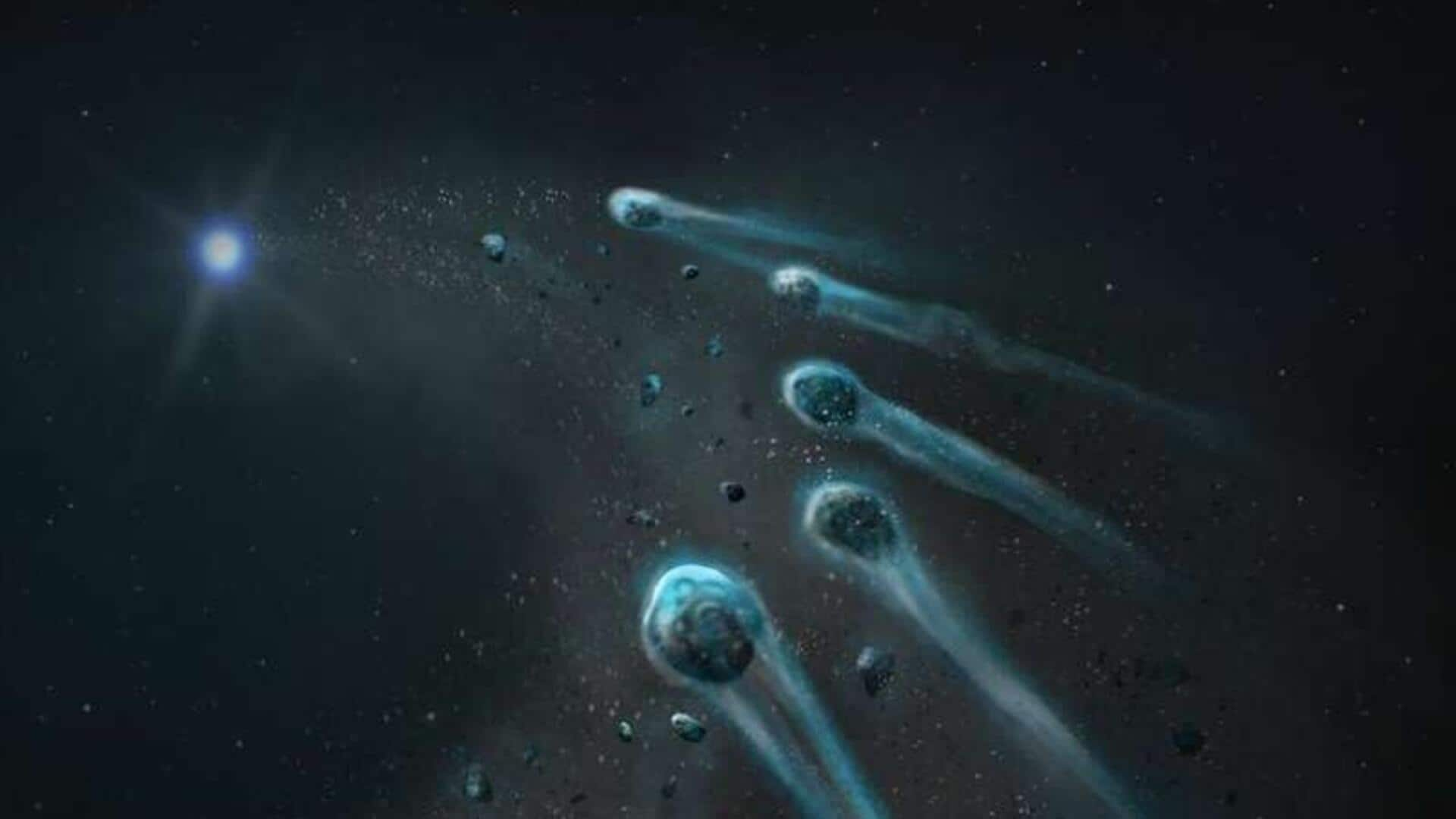Astronomers discover a unique icy planetesimal: What’s so special?

**Astronomers Discover a Unique Icy Planetesimal: What Makes It So Special?**
*By Dwaipayan Roy | Sep 28, 2025, 03:13 PM*
Astronomers from the University of Warwick have made an exciting discovery of a frozen, water-rich planetary fragment being consumed by a white dwarf star. This groundbreaking finding was published in the *Monthly Notices of the Royal Astronomical Society* and sheds new light on the composition of celestial bodies outside our solar system.
### A Unique Find: Volatile-Rich Atmosphere
Among the stars studied, one white dwarf named WD 1647+375 stood out for its unusual atmospheric composition. Unlike typical white dwarfs, which primarily have hydrogen and helium atmospheres, WD 1647+375 showed significant amounts of volatile elements such as carbon, nitrogen, sulfur, and oxygen. This volatile-rich atmosphere marked the star as distinct from others in its class and prompted further investigation.
### White Dwarfs as “Cosmic Crime Scenes”
Lead author Snehalata Sahu explained that white dwarfs often contain signatures of elements like calcium and iron, which come from planetary debris they absorb. These elements originate from planets and asteroids that stray too close and get engulfed by the star. By studying the chemical composition of such debris, astronomers can uncover the makeup of distant planetesimals.
Sahu likens white dwarfs to “cosmic crime scenes,” where the elements left behind by disintegrated planetesimals provide valuable clues to their identity and origin.
### Evidence of an Icy Origin
Using ultraviolet spectroscopy data from the Hubble Space Telescope, the research team detected an exceptionally high nitrogen content in the material accreted by WD 1647+375 — the highest nitrogen abundance ever observed in white dwarf debris. Additionally, the observed oxygen levels exceeded what is typically expected for rocky objects, further supporting the theory that the consumed body was icy and water-rich.
### Could It Be a Comet or Dwarf Planet Fragment?
The data suggests that the object being devoured by WD 1647+375 is an icy planetesimal, possibly similar to comets like Halley’s or fragments of dwarf planets. Professor Boris T. Gänsicke, the study’s second author, pointed out that the volatile-rich characteristics resemble Kuiper-belt objects in our solar system. This leads to the intriguing possibility that the debris could be a fragment of a Pluto-like planet.
### Why This Discovery Matters
This is the first confirmed case of a hydrogen-atmosphere white dwarf absorbing an icy, volatile-rich body, opening new doors to understanding planetary system evolution and composition beyond our solar neighborhood. However, questions remain about whether this planetesimal originally belonged to the star’s planetary system or was an interstellar comet captured from the depths of space.
As investigations continue, this discovery promises to expand our knowledge of the diverse planetary bodies that exist throughout the galaxy.
https://www.newsbytesapp.com/news/science/astronomers-discover-icy-planetesimal-being-devoured-by-white-dwarf-star/story









